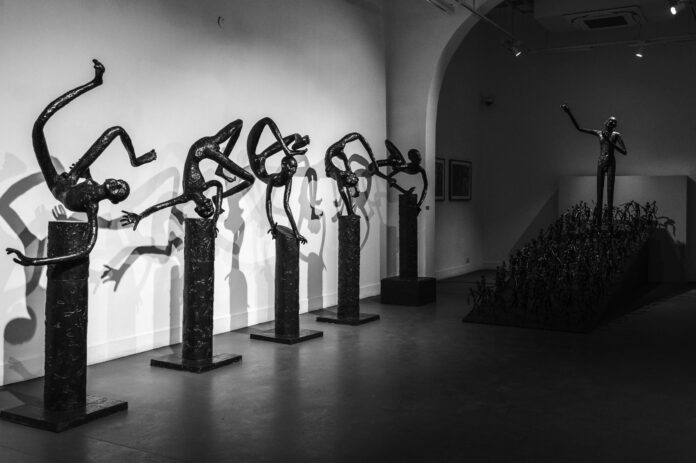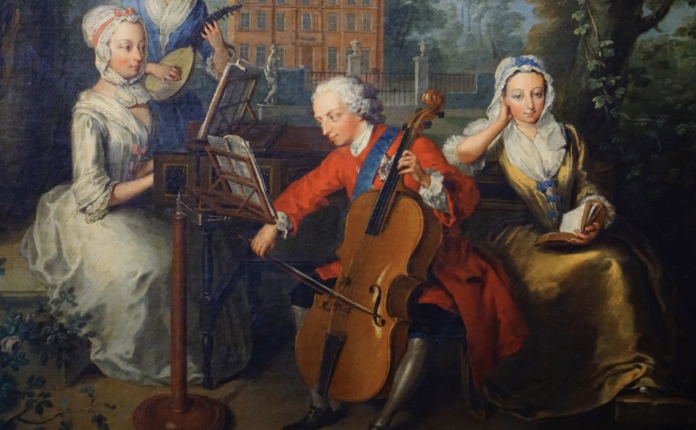Located in Lutyens' Delhi on an 8-acre site, Bikaner House is evolving into a refuge for art and culture enthusiasts. This facility hosts everything from the entire spectrum, from jazz music performances and exquisite restaurants to many book releases. There are outdoor performances of dance, theatre, storytelling, and other creative forms, as well as folk, classical, and contemporary music in a perfumed-scented, moonlit garden. In addition, there's an art area featuring paintings, sculptures, and photography on display. One of the best options for designers in the city is Bikaner House, which conservation architect Abha Narain Lambah has exquisitely renovated. Bikaner House is also known as a fashionable venue for haute couture events.
Its architecture is primarily Western, incorporating certain Rajput elements—notably the chattris or the canopy-styled dome. The zenana, or women's quarters, was located on the first level of the royal home, while the reception suites, private apartments, and guest rooms were on the ground floor. Its original benefactors' imperial magnificence and taste are still evident in its current form.
Curator Zakir Khan emphasised the promotion of art by Bikaner House and said: "We focus on all the artists, all the art forms, be it in India or abroad. We try to reach as many people as possible, and you will see different art forms are confluent. We also try to promote Rajasthan and its culture along with other regions. International realms and their artistic expressions have been incorporated because we have at least 7-8 exhibitions planned in the next financial year, which will come from different parts of the world, like France, Australia, and Nepal." ”
He talks about the importance of promoting artists and local artisans: "There are many art forms in India, be it Varli, Goan and the numerous art forms confined in Rajasthan, and some of them are dying. So it's very important to promote them. Nationwide platforms like the Bikaner House or other places are the only mediums through which they can earn their bread and butter. Because they are the only mediums through which they can earn their bread and butter, they are alive as long as the art form is alive and helps to give them a fresh lease of life."
Kishangarh, a Mythical Landscape
The first exhibition on our roster was the ideation and curation of Princess Vaishnavi Kumari's miniature atelier 'Studio Kishangarh', called 'Kishangarh, a Mythical Landscape'. About the same, Princess Vaishnavi Kumari says, "This is an atelier in the format of a Rajput karkhana workshop, and its base location is in Rajasthan. We employ local miniature painters from all around the city. The idea of the studio is that we want to create employment and ensure a sustainable livelihood through the art forms and artisans who work for us, but also to contemporise the art forms. So this particular collection takes inspiration from the physical landscape of Kishangarh as well as elements from miniature paintings from our collection, and it tries to re-interpret them in a modern context for the modern viewer."
Promoting the art of local artisans, the paintings had a distinct quality with the vivid use of colours and a dense representation of nature. Each painting stood as an emblem of the country's artistic talent, and Princess Vaishnavi's efforts to promote and celebrate the same are imbued in the exhibition.
On the Open Road
Stepping outside, we traversed through the pathways of this fascinating complex and as our gaze went to the lush garden, 50 six-foot human sculptures enthusiastically greeted us. We took multiple pictures of the unique sculptures and went inside to view more displays. This was renowned sculptor Radhakrishnan Sreemam's retrospective 'On the Open Road', presented by Gallerie Nvya at the Centre for Contemporary Art and curated by art historian Prof R. Siva Kumar.
The sculptor's keen eye towards understanding and presenting human emotions animatedly with a life-like quality is unmistakable. Some sculptures were large, while the smaller ones were perched on the walls. One of the most interesting pieces was the one with the lamp projecting light, but there were innumerable small bronze figurines instead of the gleam. The centre of attraction was a long ramp with tiny figurines and, in the middle, a huge figure that could have multiple interpretations.
In the Forest of the Night
Behind Haldiram's was another striking solo exhibition of New York-based painter and printmaker Tara Sabharwal's exquisite artwork. Titled 'In the Forest of the Night', her exhibition is described by curator Jesal Thacker, who says, "This abstraction is a walk into the forests of the night, where the cognitive faculties are refined to suit more than one purpose. In a manner where the auditory, olfactory and tactile faculties chart the map of envisioning the way into the forest, that metaphorically represents the subliminal. Each series presented in the exhibition are mnemonic patterns bridging the worlds of the new unconsciousness to the conscious."





